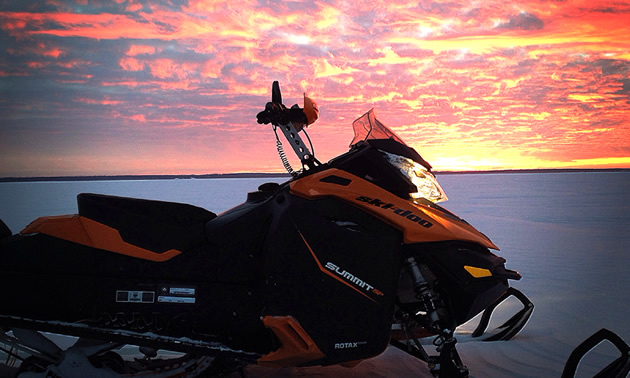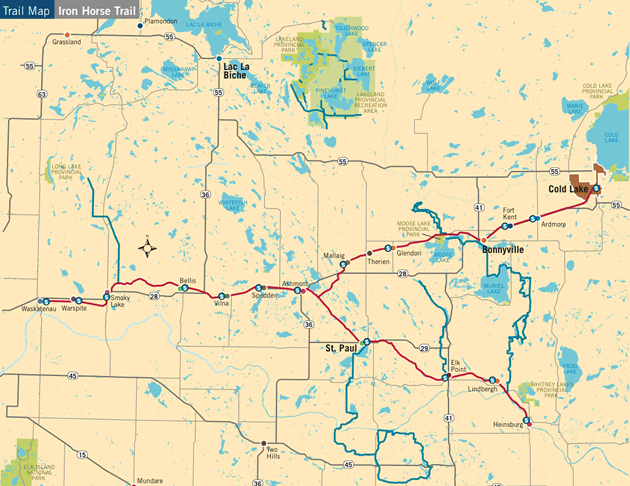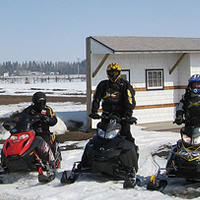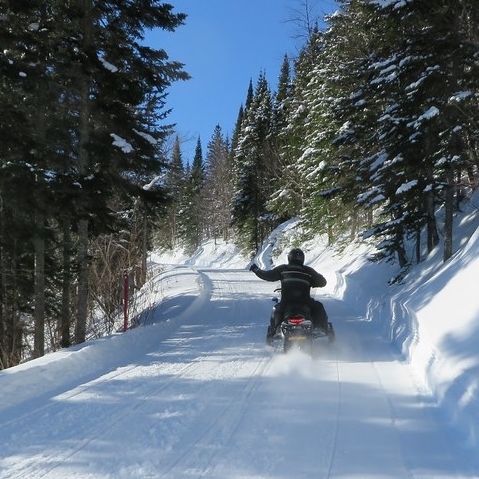Alberta’s Lakeland is an open canvas of natural beauty, and running straight through the heart of it is the oldest and longest continuous trail in the province—the Iron Horse Trail (IHT). This 300-kilometre multi-use corridor is a former rail bed that was turned over to recreation in 2003. It is open year-round, but in winter, the trail is enjoyed by Nordic skiers, equestrians, dog walkers and, most prolific of the bunch, snowmobilers.
Smoky Lake
The IHT starts 20 kilometres west of Smoky Lake, but it is here, in the pumpkin capital of Alberta, where you’ll find the official gateway to the trail. The Trail Pavilion and Staging Area is located right off Main Street, next to Pumpkin Park.
From Smoky Lake, you can also explore bush trails in The Pines area south of town. Or, head north on the NTC trail where the riding opens up to pipelines and cutblocks.
There are five warm-up shelters in the Smoky Lake area and two were just installed this year. Lane Ikert, president of the Smoky Lake Trail Twisters, said the club is starting to expand and that plans for a new trail running from Smoky Lake all the way to Fort McMurray are on the agenda.
Cold Lake
The northeast branch of the IHT from Abilene Junction ends or begins (depending on which way you look at it) in Cold Lake. All services and amenities are available in Cold Lake and there is a staging area for the IHT directly west of the Fas Gas station. No more do riders have to cross the river in order to get to the IHT. Repairs to the Beaver Ridge Trestle Bridge east of town are complete and it will be usable this winter.
Another popular area to ride around Cold Lake is the lake itself. Throttle it out on the seventh largest lake in Alberta, or take the groomed trail from there to the Cold Lake Snowmobile Club’s cabin at Crane Lake. Cold Lake is right next to the Alberta-Saskatchewan border, so you can also head east and join up with the trails that are maintained by the Ridge Riders in Goodsoil, Saskatchewan.
“There are quite a few people from Cold Lake who go over to Goodsoil, have lunch and ride back,” said Dean Dube, president of the Cold Lake Snowmobile Club.
Lac La Biche
More lake riding can be found at Lac La Biche. This town, which is located about two and a half hours from Edmonton, is surrounded by more than 100 lakes and lots of wilderness terrain.
In terms of a sledding destination, Lac La Biche is still in its infancy, but the riding opportunities are there, and after speaking with some of the locals, there is interest in starting a club. For now, visitors to the area can find their way around by following the sled tracks of other rides. The powerlines are great places to ride as well.
In February, Lac La Biche hosts the annual Winter Festival of Speed. Motorcycle and car races are featured, as are snowmobile drags.







